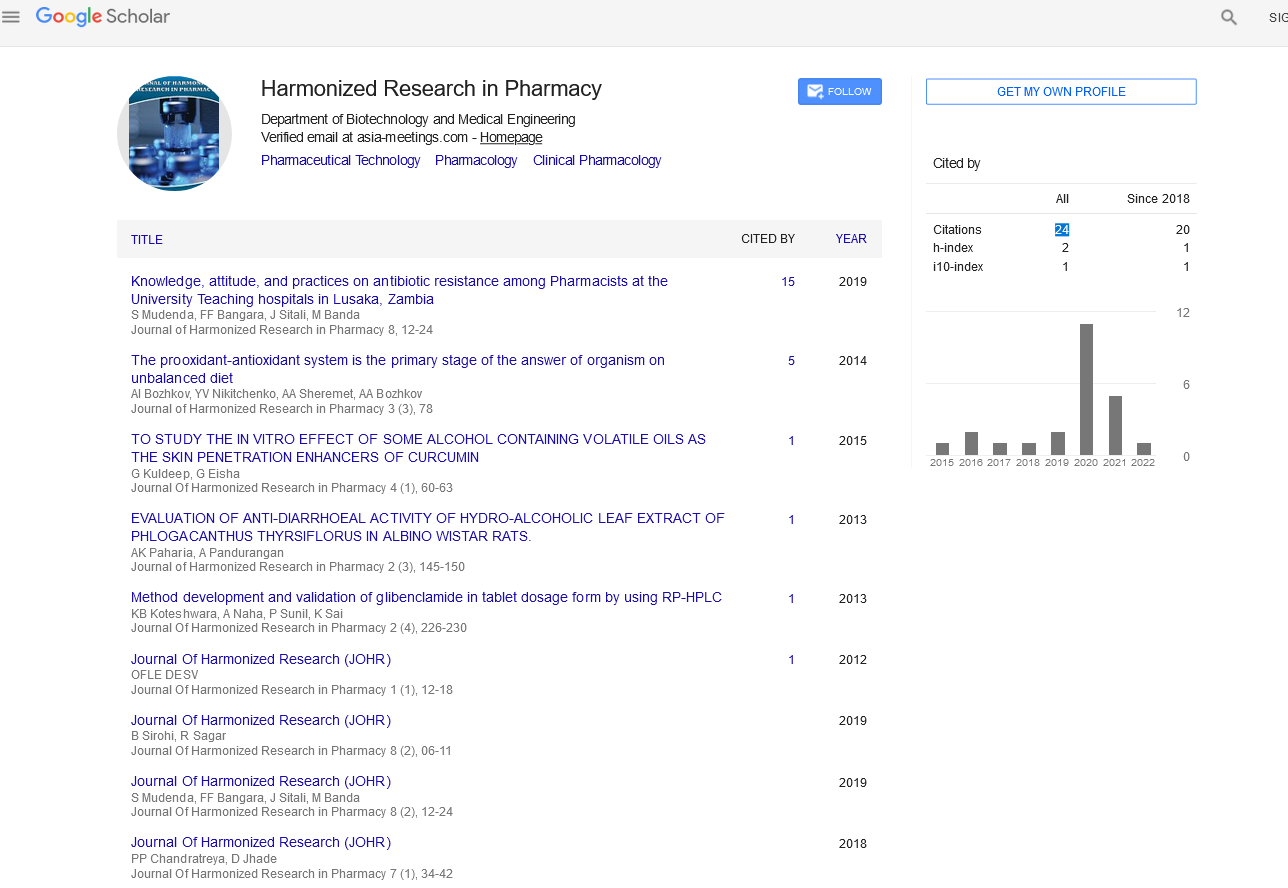EVALUATION OF FREE RADICAL SCAVENGING ACTIVITY OF THE DIFFERENTFRACTIONS OF TYPHA LATIFOLIA. (TYPHACEAE)
Abstract
Author(s): Rahul Shukla, Sajal Srivastava, Parmesh K. Dwivedi, Saikat Sarkar, Sumit Gupta and Ashutosh Mishra
We have investigated different parts of Typha latifolia in pursuit of unraveling its oxidant quenching ability and discover novel, prudent and inexpensive antioxidants. Samples of rhizome, shoot, leaves and pollen from Typha latifolia were tested for total phenolic content, and flavonoids content and in vitro antioxidant activity by diphenyl-1-picrylhydrazyl (DPPH) assay. The extracts exhibited strong antioxidant activity with IC50 values of ethyl acetate extract 6.72 µg/ml, 34.06 µg/ml, 16.4 µg/ml, 9.6 µg/ml, methnolic extract 230 µg/ml, 301.32 µg/ml, 213.5 µg/ml and 11.7, Aqueous extract 4.5 µg/ml, 2.45 µg/ml, 35.47 µg/ml, 9.3 µg/ml of rhizome, shoot, leaves and pollens respectively. IC50 value of standard ascorbic acid was 2.69 µg/ml. Total phenolic content was measured in mg catechin equivalent/g dry weight (µg CE/mg). Ethyl acetate, methnolic, aqueous extract of rhizome and pollen showed higher values i.e. 102.1±7.55, 94.17±10.13, 109.25±1.67, 140.87±7.01, 137.04±4.13, 230.5± 1.41. Total flavanoid was calculated in mg rutin equivalent/g dry weight (µg RE/mg). Ethyl acetate, methnolic and aqueous extracts of pollen showed higher value i.e. 46.24±0.39, 71.87±0.45, 53.92± 5.47. Tests have shown high percentage of presence of alkaloids, sterols, sugars, flavonoids and tannins in different extracts of rhizome, leaf, shoot and pollen. These results allude that Typha latifolia has strong antioxidant potential. But, further scrutiny is essential for isolation and characterization of the active anti-oxidative components, which can be employed to allay various oxidative stress-related maladies.

Google Scholar citation report
Citations : 147
Journal of Harmonized Research in Pharmacy received 147 citations as per google scholar report









